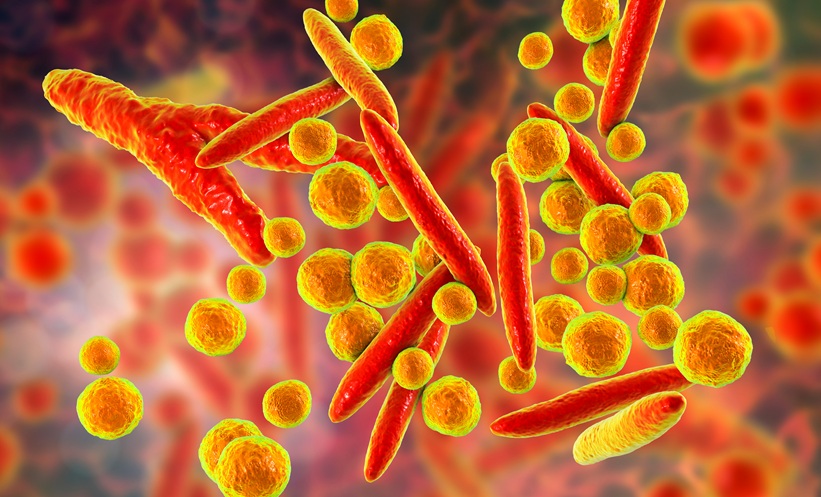Author: Evan Kimber, EMJ, London, UK
Citation: Microbiol Infect Dis AMJ. 2023;1[1]:17-18. DOI/10.33590/microbiolinfectdisamj/10307350. https://doi.org/10.33590/microbiolinfectdisamj/10307350.
![]()
PRIMARY PREVENTION OF ZOONOTIC DISEASE EMERGENCE
The idea of preventing diseases before they start was integral to the first presentation, delivered by Aaron Bernstein, National Center for Environmental Health, Agency for Toxic Substances and Disease Registry (ATSDR), Centers for Disease Control and Prevention (CDC), Atlanta, Georgia, USA. Citing a recent study, and listing multiple species with which humans share a common germ pool, Bernstein stressed that up to 75% of emerging infections have zoonotic origins. The concept of spillover was discussed in depth, referencing the movement of pathogens from animals into humans, either through insect vectors or largely by domesticated animals. Bernstein highlighted the need for improved preparedness to prevent human amplification and global spread of these diseases, especially when considering that climate change is creating conditions for increased encounters with animals, in turn facilitating the spread of zoonotic infections and spillover events.
Viral spillover has historically caused the greatest problems globally. Referencing the Spanish flu and COVID-19, Bernstein spotlighted this as a focal point for primary prevention, alongside antimicrobial resistance. According to Bernstein, greater health equity and vaccination access across lower-income countries will reduce outbreaks and future disease emergence. He gave four avenues for altering activity in order to prevent pandemics at source: land use change, wildlife consumption, wildlife trade, and livestock biosecurity. He concluded his section with the encompassing statement: “We live on a world in which our infectious disease risks are completely tied in with the welfare of other living things.”
SURVEILLANCE FOR DISEASE X
In her presentation, Christine Johnson, University of California (UC) Davis, USA, built on the themes raised by Bernstein to provide a global view of emerging disease during the period of accelerated change we are experiencing. Given the impact of the biodiversity crisis and climate instability in the world today, she emphasized that disease emergence is a consequence, and repeated the statistic that “over 75% of recently emerging infectious diseases have come from wildlife origins.” Johnson went on to stress the irreversible nature of spillover events, and the permanent changes which are brought about as a result. Her work focuses on investigating and documenting the animal–human interface between outbreaks, to promote readiness in dealing with a pandemic in the future.
Throughout her talk, Johnson described the circular nature of zoonotic disease transmission, “which really adds a layer of complexity with our ability to trace back emerging infectious diseases.” Using coronaviruses as an example, she described detection windows and the extreme difficulty in tracing a disease back to its origins. Part of her talk presented data ranking the zoonotic transmission of viruses. Domesticated mammals linked to agricultural production provided the most significant sources of transmission, in the form of pigs, cattle, and horses. She also explained the links of spillover through mice and rats with urbanization. Johnson emphasized the challenges with tracking zoonotic disease transmission effectively in at-risk populations who have less access to healthcare. Surveillance and improved provision in these populations should be a key focus.
Johnson concluded by urging her fellow infectious disease experts to report and publish both their cases and wider research, acknowledging that there are currently large gaps in literature relating to how people are being exposed and infected, labelling these “epidemiologic puzzle pieces.” Using large bat populations that live in American road overpasses close to cities as a reference, she finished by reminding attendees that habitat loss, and exploitation of wildlife through hunting and trade, are driving spillover events by facilitating inter-species contact and viral transmission in particular. International collaboration and community engagement have never been more important to supporting pathogen surveillance.
PREPARING FOR DISEASE X
Henry Walke, CDC, USA, highlighted the importance of the content in this session by sharing how the CDC is preparing for future disease outbreaks.
Categorizing threats, he provided the USA government classifications of ‘natural’, ‘accidental’, and ‘deliberate’ that make up the national biosecurity strategy, which aims to lower the risk of nationwide and international incidents. Integral to this section was the inevitability of an eventual emergence of ‘disease X’ and how we are going to deal with this.
Efforts to translate research into practice, in a way that is understandable to the public, are imperative to the future initiatives of the CDC. Walke described how funding must be flexible, sustained, and co-ordinated to ensure systems are working together efficiently, complementing themes to do with equality from the previous speakers. He also highlighted the significant investment the CDC is providing to public health infrastructure and readiness in the USA, reporting over 10 billion USD invested in 2022.
Walke emphasized that early detection, characterization of a disease, mitigating impacts, and providing protection are the four pillars that make up the CDC’s response to ‘disease X’. “The goal is to create scalable, flexible systems that will last beyond a current crisis and work for any disease or condition,” is how he described this vision. An example of this ethos being translated into tangible infrastructure is the new Center for Forecasting and Analytics (CFA), which has been set up to enable rapid response to future pathogenic threats with timely and effective decision-making. The CDC is really leading by example by implementing protective initiatives, paving the way for other public health departments to follow suit.
CONCLUSION
Common themes that prevailed in this session included an emphasis on the importance of international co-operation, and improved equality in access to public health infrastructure, which will prove essential to rolling out a robust response to ‘disease X’.







